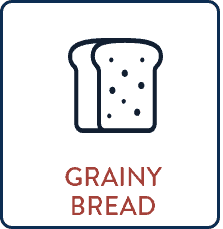Glycemic
Index (GI)

What even is GI, anyway?
Excellent question. The Glycemic Index (GI for short – because let’s face it, ‘Glycemic’ is a mouthful!) is a tool that measures how quickly carbohydrates raise your blood glucose (sugar) levels.
Low GI foods
Digested at a slower rate, causing a lower and slower rise in blood sugar levels.









Low GI foods
Digested at a slower rate, causing a lower and slower rise in blood sugar levels.









High GI foods
Quickly digested and absorbed,
causing a sudden spike and
subsequent fall in blood sugar levels.







Why is low GI so
important?
Eating low GI foods has been associated with many health benefits, including:
- Sustained, longer lasting energy
- Staying fuller for longer
- Increases physical performance by extending endurance
For these reasons, it’s generally recommended to consume mostly low GI foods. However, this does not mean medium to high GI foods need to be eliminated from the diet, it’s all about balance.
Why is low GI so
important?
Eating low GI foods has been associated with many health benefits, including:
- Sustained, longer lasting energy
- Staying fuller for longer
- Increases physical performance by extending endurance
For these reasons, it’s generally recommended to consume mostly low GI foods. However, this does not mean medium to high GI foods need to be eliminated from the diet, it’s all about balance.
Note: GI doesn’t take into account the total amount of carbohydrates found in a food.
















